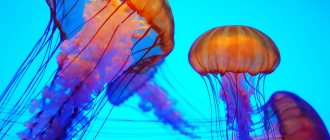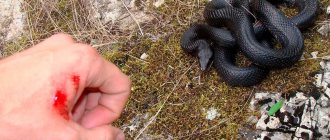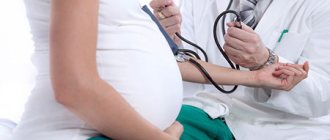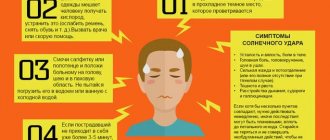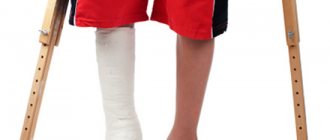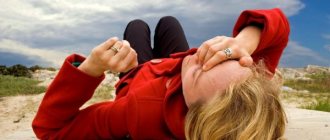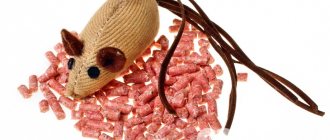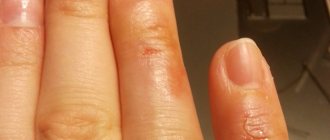Wasp habitats
This stalk-bellied insect can be found in various places. They pose the greatest danger to owners of summer cottages and people who live outside the city, as they often build their nests in close proximity to human habitation.
There are solitary and social individuals that form a swarm. The following social wasps can often be found near humans:
- Paper ones. They build dwellings under the roof of houses, in attics or in walls, since protection from precipitation and excess moisture is important for their houses. For their nests, paper hymenoptera use building material from tree bark and their own saliva, which resemble parchment in composition.
- Floral. The nests of these hymenoptera can be found in the ground or seen on tree branches. These individuals build strong houses from sand and clay, which are held together with saliva.
- Shershnev. Large predatory insects that can not only sting, but also bite with powerful mouthparts. The consequences of a wasp sting of this type can even lead to death if medical assistance is not provided in time.
Near housing you can also meet single people who prefer to settle in a layer of soil. If social varieties of insects can build a nest in an abandoned hole or anthill, then solitary insects prefer to build a new home for their larvae each time.
Preparations for treatment
There are three types of pharmaceutical products for treating bites:
- Ointments.
- Creams.
- Gels.
Ointments and creams take a long time to absorb, so you need to wait a little after applying them. In addition, they are made on the basis of fat, so they almost always leave stains on clothes.
Gels are the most effective means of protection, as they are quickly absorbed and easily washed off, because they do not contain oils and are water-based.
The most common drugs:
- Nezulin.
- Psilo-balm.
- Bepanten.
- Fenistil-gel.
- Epidel.
- Soventol.
- Rescuer, and others.
All these remedies work on the same principle, namely, they are absorbed into the affected areas of the body and neutralize the poison. Therefore, it is often written on them that they relieve itching and irritation, and this is true, sometimes, thanks to the essential oils they contain. Some of these products specialize not only in insect bites, but also in other allergic reactions.
However, it is necessary to take into account contraindications for pregnant women and infants (if any), as well as in case of individual intolerance.
https://www.youtube.com/watch?v=KIyIFLx7vcY
In case of a child being bitten, all the same methods are used, the only difference is that you need to use special children's creams and gels, such as:
- Gardex Baby. This remedy can be used from 12 months of age.
- Balm Rescuer can be used even for infants.
- Picnic Family – for teenagers from 7 to 16
- Children's Moskitol.
And if they are not there, you can use traditional methods such as citric acid and sugar.
If a wasp has bitten your child, do not worry too much, because allergies in children are very rare. In most cases, you just need to disinfect the wound and apply a cooling compress. Sometimes, when the bite occurs in a vulnerable area, you need to go to the hospital as quickly as possible.
The main thing is not to escalate the situation and not to feel sorry for him, but it is better to simply calm the baby down by switching his attention to something else. After all, the greatest danger here is that most fears and phobias are formed in childhood, and if a child sees your hysterical reaction to a painless bite, consider that there is one more insectophobe on Earth.
The child should always see calm and unshakable confidence on your face, this applies not only to wasp bites, but to everything in general.
Signs of a bite
We are surrounded by a large number of insects that can sting. If you identify the attacking insect, then providing assistance in case of a wasp sting will be much easier. Sure signs of an attack by this particular species of Hymenoptera are sharp pain and immediate swelling around the puncture. The more delicate the skin, the more noticeable the consequences of the attack of striped neighbors. After being stung by a wasp, the following may appear:
- Redness;
- Persistent itching;
- Small rash in the form of red dots or blisters;
- Pain in the peritoneum, attacks of nausea, vomiting may occur;
- Convulsions that appear due to increased temperature.
In a healthy adult, all manifestations of an unpleasant encounter can pass quite quickly, but in children, women and people prone to allergies, they can lead to impaired respiratory function and extensive swelling.
How does a wasp sting, how does its sting differ from a bee sting?
These are quite aggressive insects, always ready to attack. However, they will not sting a person peacefully passing by. Wasps attack if they are in danger or the threat of ruin hangs over the nest. When biting, the insect pierces the skin of the victim with its sting, injecting poison. Having bitten once, it strives to do it again.
The wasps do not die after the attack. They can sting repeatedly. The number of bites depends on the type of insect, its age and the amount of toxic substance that its body is capable of producing. Wasps usually bite at least 5 times.
Bees, unlike wasps, leave a sting in the wound, dying some time after losing it. The bee is considered the most harmless stinging insect. Wasp venom is much more toxic, so the consequences of their stings are more pronounced than the reaction to bee venom.
What to do if you are stung by a wasp?
First of all, you need to calm down and stick to the algorithm:
- Remove the poison and wash the wound with soap and water, which will remove dirt from the skin and any remaining toxic liquid;
- Treat the wound with disinfectants; hydrogen dioxide, alcohol solutions and tinctures are ideal;
- Cool the bitten area with ice or a cold compress, which will reduce swelling and relieve pain;
- Take a drug with an antihistamine effect;
- Drink plenty of sweetened liquids;
- Provide rest to the victim.
It should be remembered that after wasp stings, you should not drink alcohol, which only worsens the negative consequences. If the bites are in the area of the eyes, larynx or tongue, you must call an ambulance. During the warm season, all allergy sufferers are advised to carry a first aid kit with first aid supplies for wasp bites, which should include antihistamines, painkillers and antiseptics.
In the event of an insect attack on children, you should act in the same way as with an adult. And after pre-medical manipulations, the child must be taken to the doctor. It is necessary to maintain absolute calm so as not to disturb the child’s psyche and not complicate the baby’s general condition.
Why does the skin at the site of the bite become red, swollen and itchy?
If bitten by a wasp, the skin at the site of the lesion quickly swells, turns red and becomes hot. During an insect attack, the victim feels acute pain, which turns into severe itching. Why does the area where the wasp sting occurs itch, swell and turn red?
The self-defense weapon of these insects is a sting, which is connected to a paired gland that secretes a toxic substance. Their poison is stored in a special tank. By thrusting its stinger into the skin, the wasp injects a certain amount of toxic substance. The natural reaction of a healthy body to interaction with it is redness, swelling and irritation.
For allergy sufferers and people with weak immune systems, symptoms may be more pronounced. An allergy to a wasp sting is manifested by the following symptoms:
- increased body temperature;
- dizziness;
- attacks of nausea and vomiting;
- impaired coordination of movements;
- fainting;
- clouding of consciousness;
- diarrhea;
- deterioration in vision clarity;
- increased heart rate;
- blood pressure disorders;
- skin rashes;
- swelling of the eyelids and soft tissues;
- swelling of the larynx;
- feeling of suffocation;
- anaphylactic shock;
- pallor of the skin.
Folk remedies for the treatment of wasp stings
There are not always means at hand that can help with an attack by Hymenoptera. You can relieve swelling and reduce tooth size using folk remedies.
To prevent the spread of wasp venom throughout the body, it is necessary to remove it from the wound. Afterwards, apply something cold or a compress of baking soda to the affected area, which is prepared at the rate of 1 tsp. for 1 glass of water. A piece of wet sugar will help draw out the poisoned liquid from the wound, and special antihistamine ointments and gels will relieve swelling.
Reducing pain can be achieved by using compresses made from lemon, vinegar or ethanol solution. Onions, garlic, tomatoes and apples have a good effect on the wound. Vegetables and fruits are cut and applied to the wound. Validol wet tablet provides excellent pain relief. Gruel made from parsley, Kalanchoe or plantain has a restorative and wound-healing effect. It should be remembered that before grinding the herbs, they are thoroughly washed and only then applied to the wound.
In order not to have to provide assistance with wasp bites, it is important to know the behavioral characteristics of these insects. Aggression in Hymenoptera manifests itself only when defending its life, offspring, and nest. Don't wave your arms or shout if your yellow-striped neighbor is flying overhead or around you. You should smoothly move away from the insect to a safe distance, which will avoid many unpleasant moments. If an insect has flown into the house, you can open doors and windows to expel the uninvited guest with a towel or create a draft that will force the wasp to fly out of the living space.
Traditional methods
You can cope with swelling after a wasp sting at home using traditional methods. Some of them are really quite effective, while others are not only useless, but even dangerous. Let's consider the most popular recommendations of traditional healers:
- Cauterization . It is believed that under the influence of high temperature the poison loses its activity. In fact, this is not the case; attempts to cauterize the bite site with the flame of a lighter or a burning cigarette are not effective. In addition, the method is very painful and, in addition, increases the risk of developing purulent-infectious complications in the future.
- Cutting . Another ineffective and dangerous method. Its supporters believe that if an incision is made at the site of the sting, then a significant part of the poison will come out along with the blood. In fact, wasp venom is absorbed almost instantly, and the cut itself is an entry point for purulent infection.
- Clay . Applying wet clay to a wound not only does not reduce the severity of symptoms, but can also lead to infection.
- Alcoholic drinks inside . You can often hear that a victim of a wasp sting should be given 50-100 ml of strong alcohol to drink in order to relieve pain. Alcohol is not actually an effective pain reliever. In addition, it increases intoxication.
- Parsley . It has a pronounced anti-edematous and anti-inflammatory effect, therefore it is effective. A bunch of parsley must be rinsed well under running water and scalded with boiling water, chopped in a blender and squeezed out the juice. Rub it into the bite site.
- Onion . Contains substances that have anti-inflammatory and bactericidal effects. Applying onion gruel eliminates pain, reduces swelling and suppresses the activity of the inflammatory process.
Effect of wasp venom
As a result, after a bite, the inflamed area does not go back to normal for a very long time (at best, from several days to 1.5 weeks) due to cell destruction. After several hours of pain, severe itching is added. If after two weeks the consequences of the bite remain, it is best to go to the doctor.
And one more thing: the bite and its consequences largely depend on the type of insect. The bite of some wasps is almost unnoticeable, and on the contrary, other wasps bite quite painfully.
The general picture is this: a red bump forms at the site of the bite, in the center of which a point is visible, the very place of the sting.
But if the person bitten turns out to be allergic, then the reaction of his body can be completely unpredictable. Doctors today issue an allergy sufferer’s passport, which contains not only the person’s personal data, but also the address, telephone number of the office where the patient is observed and all necessary measures in case of bites.
Often when stung on the face, it changes beyond recognition (swells). The eyes become swollen to such an extent that the person cannot see anything. Cases of being bitten on the tongue are not uncommon. In fact, in the summer there are a lot of goodies at the dacha. A person picks a fruit (most often a berry), not seeing that an insect is hiding on it, and takes it into his mouth. After this, the tongue becomes so swollen that it is not possible to close the mouth.
Complications after a bite
- Complications from bites occur in the event of a massive wasp attack. Subcutaneous hemorrhage may occur, which leads to loss of limb mobility. According to experts, a bite from 500 individuals is enough to cause death.
- Headache, loss of consciousness, high fever, and vomiting are usually diagnosed in people sensitive to the poison.
- Quincke's edema. A very dangerous complication, often requiring conicotomy. This is the process of cutting the throat and inserting a breathing tube.
- Asphyxia when bitten in the throat and neck.
- Inflammation of the membranes of the eyes, their suppuration and, as a result, deterioration of vision.
- If the bite affects the genitals, it may be difficult to urinate.
- Anaphylactic shock. During shock, in addition to the above symptoms (nausea, vomiting, etc.), blue fingers and severe pain in the chest are added. In such a situation, emergency medical care is required, otherwise death is possible.
So the most dangerous thing is the presence of that same sensitivity to insect venom. It must be remembered that if the experience of being bitten previously ended quite easily, this does not mean at all that it will continue to be so. It turns out that allergic sensitivity develops gradually, from bite to bite. And the very next meeting with a wasp can have very unpleasant consequences for you.
By the way, there is a popular belief that the ninth hornet bite for a person is the last, that is, fatal.
First aid
To minimize the negative consequences, you need to try to slow down the absorption of the poison into the body. Applying a piece of sugar to the wound will help draw out the poison.
Next, the area is treated with an antiseptic and something cold is applied. A heating pad with cold water, a piece of ice placed in a cloth, a solution of alcohol or vinegar with water. This is necessary to narrow the blood vessels and prevent the poison from quickly entering the blood.
Then the wound is lubricated with ointment, usually Fenistil or Advantan (contraindicated for children). In summer, it is advisable to have such a product with you.
So, first aid has been provided. What's next? And then we look at the patient’s condition.
Observing the reaction after a bite
If it is satisfactory, namely: the stung area is swollen, there is pain and itching, but there is no nausea, vomiting or extraneous symptoms, then there is no need to panic. Use ointment to reduce itching and promote faster healing.
The second development scenario is this: there is no allergic reaction, but there is severe pain, swelling, and the person is unable to move normally. Frequent application of a cold compress, as well as the use of ointment, will help here. And one more thing: if the pain is intolerable, with the permission of the doctor, you can supplement the treatment with painkillers. Drink as much as possible! Water removes tissue breakdown products from the body. It is best to drink sweet water or warm sweet tea. In the absence of ointment or as an addition to it: apply a baking soda solution to the sore spot for 15 minutes.
The third case is the most dangerous. We described the signs of complications above, so we will not repeat them. We proceed like this:
- Free the patient from clothing that interferes with breathing and provide free access to fresh air.
- Inject two cubes of adrenaline into the shoulder. In the other - three cubes of dexamethasone. If the reaction intensifies, after 15 minutes you need to inject another 0.5 adrenaline.
- In the absence of these remedies, the victim can take an antihistamine (Diphenhydramine, Suprastin, etc.).
- Lubricate the wound with ointment.
- The victim immediately uses an auto-injector, if available.
- If necessary, we give the patient artificial respiration.
- Hospitalization.
Important! If the person who was bitten is allergic, do not waste a second, otherwise you may lose the person.
What is the danger?
The “striped fly” does not intentionally attack humans. The insect shows curiosity about the sweet smells of perfumes, fruits, confectionery, and bright colors in clothes.
Predatory Hymenoptera behave aggressively if a person inadvertently touches them or is near the nest.
Risk factors
It is worth paying attention to important facts:
- Males are more prone to a severe allergic reaction to wasp venom.
- The sooner the allergy symptoms began from the moment of the bite, the more severe the reaction.
- If there is a history of an anaphylactic reaction, then the probability of anaphylactic shock to wasp venom is 85%.
Fact . If you are stung by a wasp, the local inflammatory reaction will manifest itself in the form of pain, redness of the skin, swelling and rash.
Bites in:
- head;
- neck;
- eyelids;
- eyes;
- lips;
- language.
These parts of the body are well supplied with blood and are located near the respiratory tract. With increasing swelling in the larynx, there is a risk of suffocation.
The head and neck are open, unprotected areas of the body that are most at risk in the event of a conflict with a hymenoptera insect. Due to constant movements, the eyes and eyelids attract attention and become a target for the summer predator.
Important . Due to our carelessness, a wasp can get into the oral cavity along with food. For a striped fly, the mouth is a closed space in which it gets lost and repeatedly bites into all soft tissues. The rate of transition of edema to the mucous membrane of the respiratory tract increases sharply.
When a wasp flies nearby, we actively gesture and try to drive it away with our hands and receive a portion of poison in the area of the hand or forearm. Young children try to get to know the aggressive hymenoptera insect better through manual contact, and therefore suffer from bites on their fingers.
At-risk groups
Bee stings are especially dangerous for children and the elderly.
How long the tumor lasts after a wasp sting also depends on the age and state of the victim’s immune system. Negative symptoms in a healthy person disappear after 3-4 days, however, there is a category of people for whom an insect bite poses a particular danger, these include:
- Small children. In the absence of severe symptoms of an allergic reaction, treatment can be carried out at home - first aid will be quite sufficient. However, if signs of general intoxication and breathing problems occur, it is necessary to call an ambulance.
- Aged people.
- Pregnant women. With a single sting, toxic substances will not harm the fetus, but if there are several stings or the expectant mother has breathing problems, you should immediately consult a doctor.
- Suffering from diabetes, bronchial asthma, and allergic reactions to various pathogens.
- People with weakened immune systems.
What NOT to do: Common mistakes
- Don't look for the sting , the wasp doesn't leave one. Proceed immediately to remove and neutralize the poison.
- As mentioned earlier, there is no need to cauterize the bite site. Although the principle itself has the right to life, after its application a burn will appear on the skin, and then a scar. However, it is not a fact that the poison will be neutralized and lose its properties. You can only burn a bite in a situation where you are far from the first aid kit and know that a wasp sting causes you a severe allergy, and you only have a lighter with you. In this case, by quickly cauterizing the damaged area, you will neutralize most of the poison and can save your life.
- Do not squeeze out the poison or rub the bite site! Pressing and rubbing the damaged area of skin with venom will only increase blood circulation and help spread the wasp venom faster throughout the body.
- Do not scratch the bite, otherwise you will get a sore at best, and suppuration at worst.
- Do not use dirty water, do not apply earth or clay, as infection can enter the body through the wound.
- Don't think that the swelling will get bigger because of water, this is a myth. Drink more water, it will help the body remove the toxin faster.
- Don't drink alcoholic beverages! They help speed up blood circulation.
